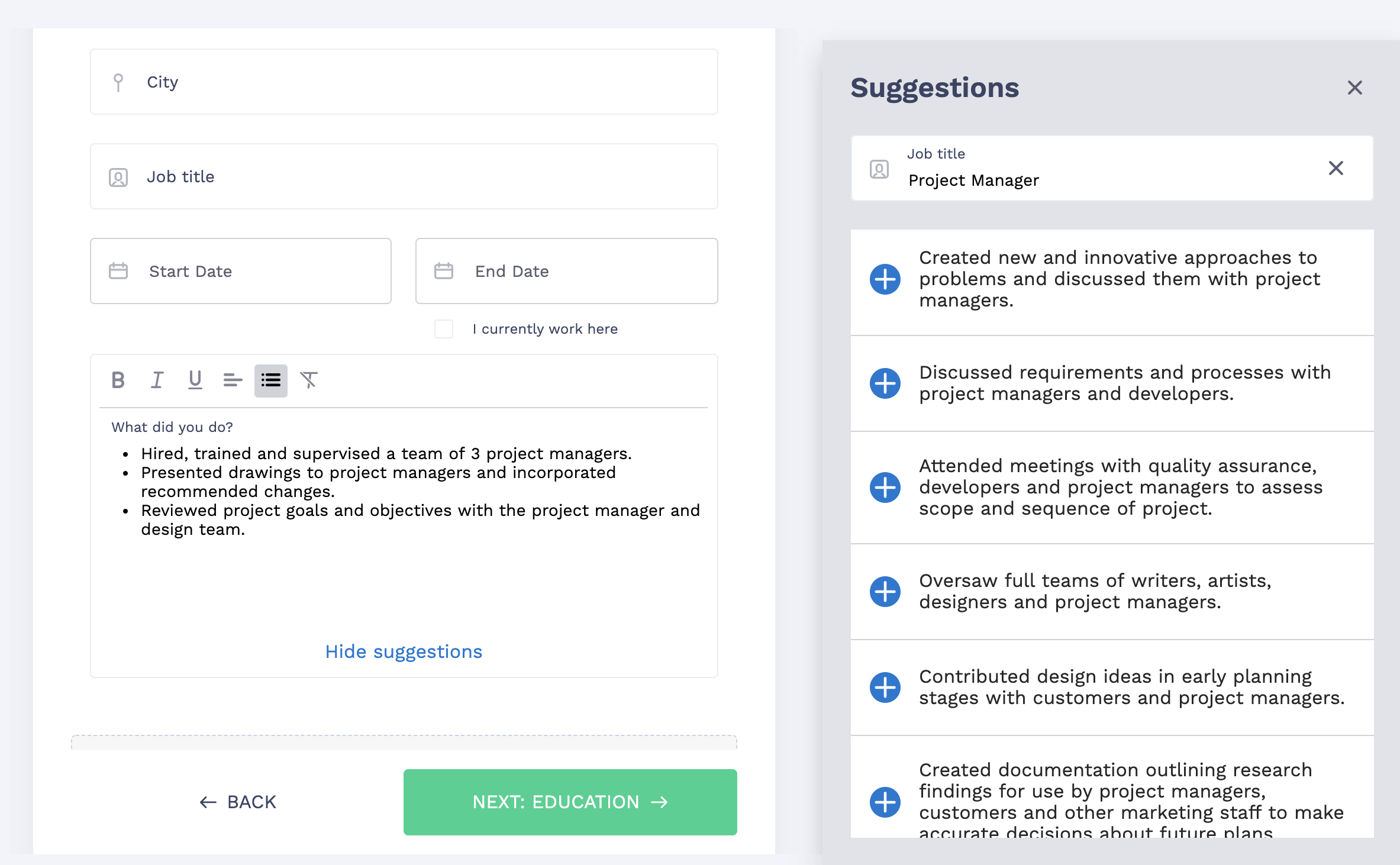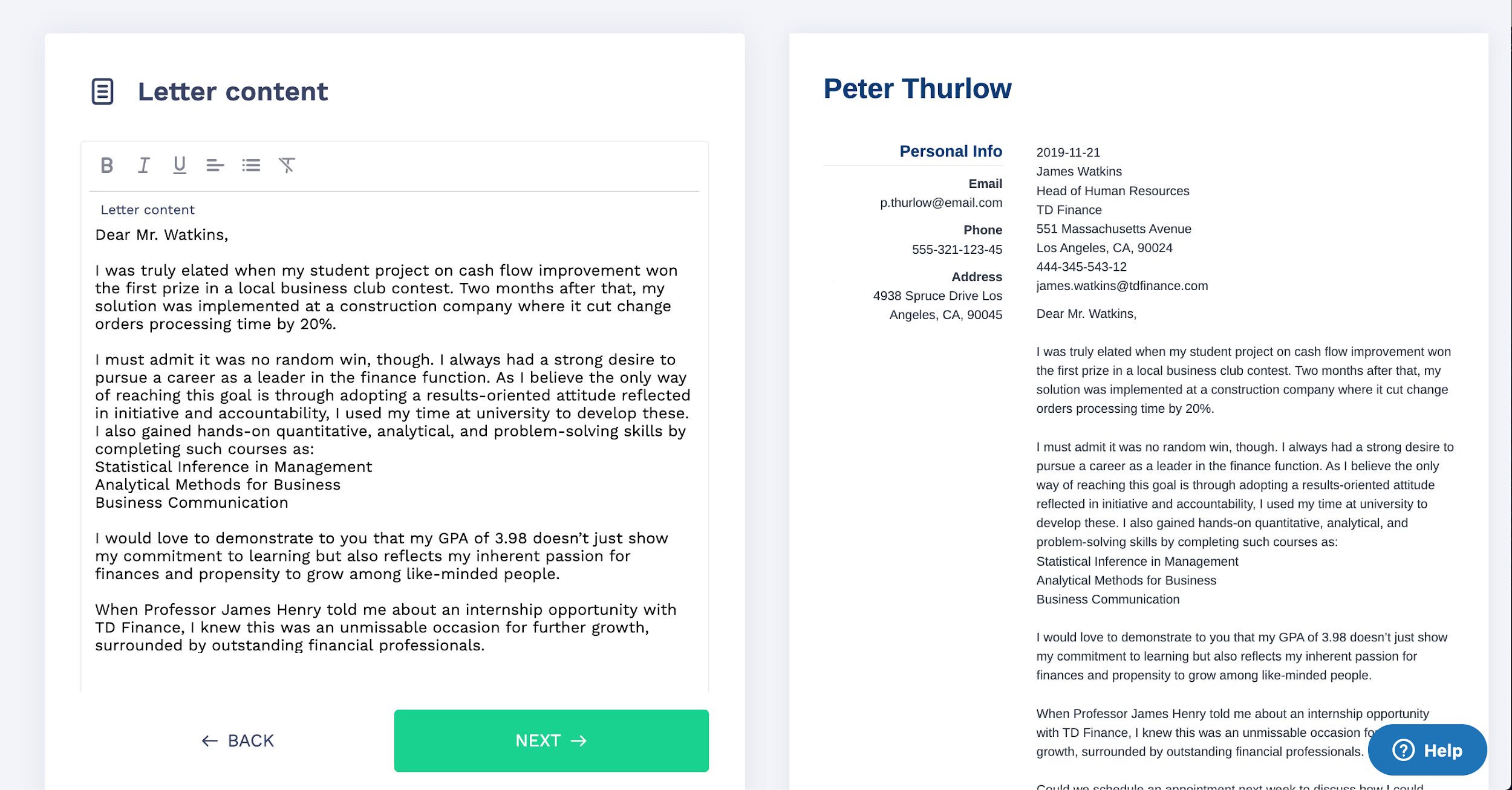
25+ Word Resume Templates (Free & Premium)
Thought that creating a resume in Word format is passé? Not if you use one of the top Word resume templates. See the best free and premium Word resumes.

Mariusz Wawrzyniak
Career Expert

Historical data on what works for actuary resumes (and what doesn’t) sure would be helpful, wouldn’t it? Here’s something even better: a ready-made set of actionable insights.
Sending your resume out into the world in mere hopes that it’ll land you a job feels awfully… unsecure. Wouldn’t you prefer to have some measure of certainty that its probability of success is higher than that of failing?
Turn your actuary resume into a safe investment with this guide and watch your application-to-interview ratio skyrocket!
In this guide:
Save hours of work and get a job-winning resume like this. Try our resume builder with 20+ resume templates and create your resume now.

What users say about ResumeLab:
I had an interview yesterday and the first thing they said on the phone was: “Wow! I love your resume.”
Patrick
I love the variety of templates. Good job guys, keep up the good work!
Dylan
My previous resume was really weak and I used to spend hours adjusting it in Word. Now, I can introduce any changes within minutes. Absolutely wonderful!
George
Looking for other professions? Here’s a list of some of our related resume guides:
Alicia Turner, ASA
Actuary
745-454-2679
alicia.turner@reslab.com
Linkedin.com/in/alicia5.turner
Summary
Detail-oriented actuary (ASA) with 9+ years of experience and outstanding data analysis and predictive modeling skills. Seeking to apply my expertise towards helping Grow Investments make informed investment and financing decisions with the highest accuracy and certainty. At Smith & Stone, improved forecasting accuracy by 14%, decreased the rate of failed investments by 12% company-wide, and suggested profitable investment options with a 99.7% success rate.
Work Experience
Investment Actuary
Smith & Stone Investments, Phoenix, AZ
March 2018–August 2023
Key achievement:
Actuary
JJB Insurance Services, Tucson, AZ
August 2014–March 2018
Key achievement:
Education
B.Sc. in Actuarial Science
Arizona State University, Tempe, AZ
September 2010–June 2014
Key Skills
Memberships
Languages
Actuaries work in investment, insurance, and financial companies, analyzing data, evaluating risks, and determining potential financial consequences of decisions or solutions. An actuary resume needs to show you have sufficient experience and education, alongside computer and people skills.
Here’s how to write a risk-free actuarial resume:
The formatting of your resume is your first chance to impress. This doesn’t necessarily mean flashy graphics—in fact, you’re best off avoiding them altogether, as Applicant Tracking Systems (ATS) may have trouble figuring out images. No—your aim is crisp, clear, and 100% professional. Here’s how to ensure this outcome:
And there you go—That’s how you make an ATS-friendly resume! Well, those are the first steps, anyway—the contents matter as well, but we’ll get to that in a moment.
One more format-related thing: check whether the job ad mentions a preferred file format. If not, submit your resume as a PDF file to keep it looking great on any device.
You’re by no means new to the challenges of explaining complex information in simple terms. If you launched into the details of every calculation during stakeholder meetings, they’d be sure to develop a strong aversion to your presentations.
Give the recruiter the same treatment: rather than delving straight into the nitty-gritty of your experience, start your resume with a profile paragraph that highlights key pieces of information. Here’s how to structure it:
This is how to write a resume summary—ideal for experienced candidates with relevant accomplishments to list on a resume.
If you’re not quite so experienced and writing an entry-level actuary resume, go with a resume objective statement instead. Focus on achievements from your studies and exams, internships, placements, volunteering, projects, or other jobs—whatever it takes to show your potential.
You’ll likely find yourself a little stuck here—coming up with a summary on an otherwise empty page is a challenge at the best of times. Start your resume for actuary jobs by writing about your work experience first instead, and come back to the profile paragraph once you have a few ideas.
The way you describe your work experience on your resume is crucial. Your past performance is the best predictor of your future success, after all.
So, the trick to an above-average actuarial resume is to make that past performance as closely relevant to future challenges as possible. In other words, you should target your resume to the specific job you’re after, taking into account its unique requirements. It’s the most efficient way to prove you’re the ideal candidate.
Here’s how to write a tailored actuary job description for your work history section:
Remember when we covered Applicant Tracking Systems? Keywords—important words and phrases from the job ad, like those skills you identified—make your resume more relevant to ATS software. When scanning incoming applications, ATS is likely to favor those that use similar language to the company’s own description of duties for the role.
So, by tailoring your work experience section in the way we described above, you’re making your resume even more ATS-compliant.
Feature some additional keywords in the skills section of your resume, too—
Include a list of up to 10 of your most relevant skills, ideally mentioned in the job ad. Here’s a list to help you get started:
Expert hint: Have tons of experience? As a rule of thumb, resumes shouldn’t go back further than 10–15 years in terms of work experience—but use your best judgment for what’s relevant and valuable to the employer.
The ResumeLab builder is more than looks. Get specific content to boost your chances of getting the job. Add job descriptions, bullet points, and skills. Easy. Improve your resume in our resume builder now.

Nail it all with a splash of color, choose a clean font, and highlight your skills in just a few clicks. You're the perfect candidate, and we'll prove it. Use our resume builder now.
Statistically speaking, the hardest part of your resume-writing process is now behind you—congrats!
Now for the easy part: your resume education section. All you need to do here is to provide key information about your highest completed level of education, including the name of the program, the awarding institution, and your years of attendance.
In case you’re currently studying (say, for a Master’s), include your unfinished degree above the completed one (in this example, the Bachelor’s).
If you’re writing an entry-level actuary resume with no work experience, expand your education section with additional information. Relevant coursework, extracurriculars, and academic accomplishments (like a scholarship, Latin honors, or a high GPA) can give you the edge you need to stand out from the competition.
All of the above sections were pretty much obligatory—but what comes next is completely up to you and your circumstances.
Create a couple of additional sections on your resume to cover anything else that’s relevant to your application, such as:
If you’re wondering whether you should include your hobbies or interests on your resume, well—
The answer is usually no, unless they’re relevant to the job at hand, and you have a reason for sharing them. For instance, if you’re applying to work for an investment firm and you run a blog on smart investment strategies, then that’s a relevant interest. In most cases, though, hobbies won’t add much to your application, and it’s better to skip them altogether.
Now for something that should never be skipped:
Writing a cover letter to send along with your resume. Though it may feel like a chore, try to see it for what it really is: an opportunity to address the recruiter directly and tell them about all the reasons why you’re the ideal pick for the job.
Double your impact with a matching resume and cover letter combo. Use our cover letter generator and make your application documents pop out.

Want to try a different look? There's 21 more. A single click will give your document a total makeover. Pick a cover letter template here.
Here’s a recap of how to write a successful resume for actuary positions:
Thanks for reading! Do you have any unanswered questions about writing your actuary resume? Perhaps you’re not sure which actuary skills to focus on in your job description? Let us know in the comments section below, we’d love to chat!
At ResumeLab, quality is at the crux of our values, supporting our commitment to delivering top-notch career resources. The editorial team of career experts carefully reviews every article in accordance with editorial guidelines, ensuring the high quality and reliability of our content. We actively conduct original research, shedding light on the job market's intricacies and earning recognition from numerous influential news outlets. Our dedication to delivering expert career advice attracts millions of readers to our blog each year.

Thought that creating a resume in Word format is passé? Not if you use one of the top Word resume templates. See the best free and premium Word resumes.

Mariusz Wawrzyniak
Career Expert

You see through the financial clutter to the big picture, and guide firms to success. Use this financial analyst cover letter sample to prove it to employers and get hired fast.

Tom Gerencer
Career Expert

Your resume layout needs to be clean and scannable. Otherwise, recruiters will reject your resume in 7 seconds. Luckily, this guide will show you how to do it right.

Maciej Duszynski, CPRW
Certified Professional Resume Writer, Career Expert